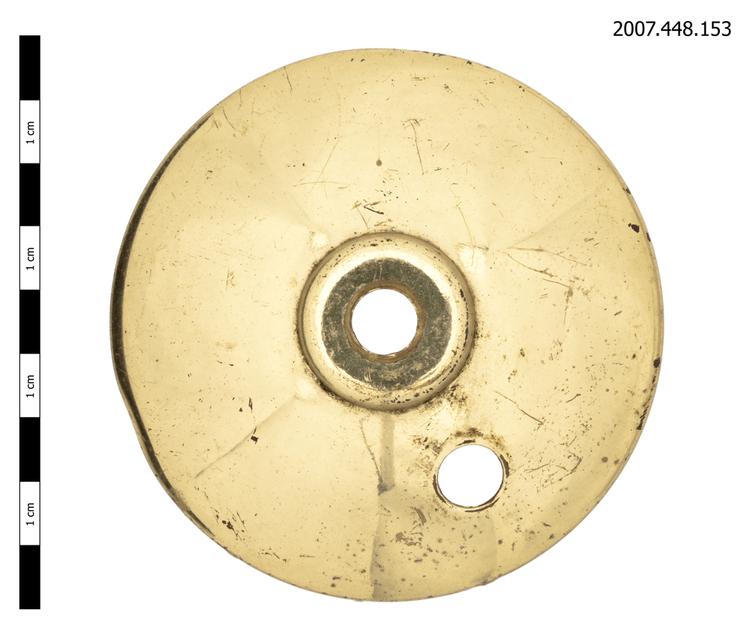
Trumpet (takht or zil 'high' karnai). Takt, zil or high model. A cylindrical brass pipe in two joints, with a flared bell constituting a third joint. The bell has a garland of the same metal with two rows of raised studs, the upper edge following the shape of the upper row. A 'handalyak' (a type of melon) ridged boss encircles the upper bell, with a further row of raised studs immediately beneath. The middle joint (2000.5.2) has a small rounded ferrule, with longitudinal ridges positioned near the proximal end and a raised rim around the upper socket. The top joint (2000.5.3) is undecorated, but has a flat ferrule around the proximal end, which flares very slightly to form an integral mouthpiece rim.
The karna originated in Persia and its use spread across Central and Southern Asia as a result of the growth of Islam in the region. It survived as a military instrument in Persia until the early 20th century, but is now only found in Tajik and Uzbek cultures in Central Asia. These examples are from Uzbekistan where they are known as karnai and are particularly associated with wedding celebrations.






